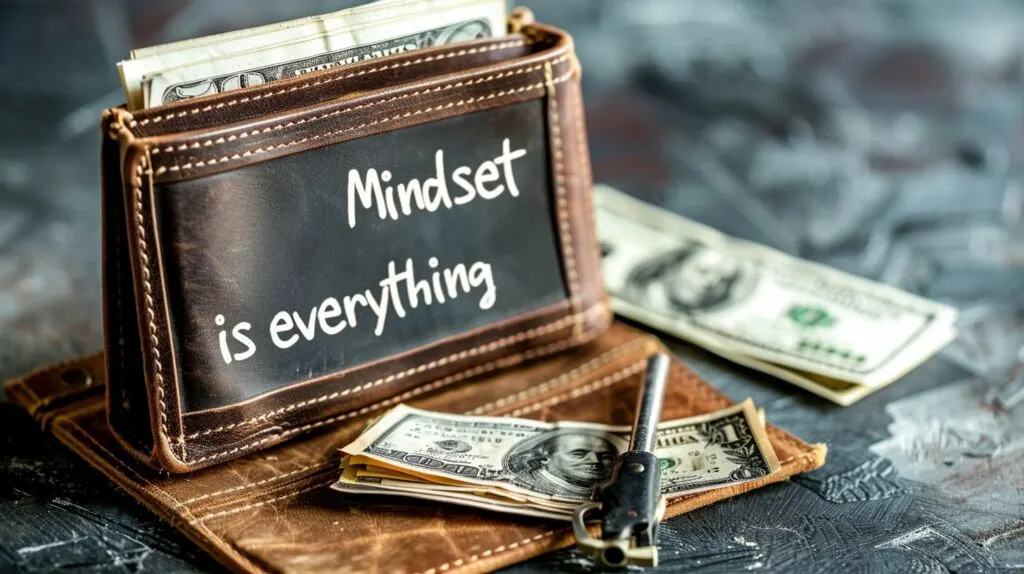Rich and Poor People’s Mindset About Wealth
The difference in the mindset of rich and poor people about wealth is a fascinating topic. It sheds light on why some individuals achieve financial success while others struggle. The way we think about money, our habits, and our beliefs about wealth play a significant role in shaping our financial reality. While the environment and upbringing also influence this thinking, it is ultimately the mindset and habits that determine financial success or failure.
This article will explore the key differences in the mindset of rich and poor people, delve into the habits that contribute to wealth building, and provide actionable insights to help you shift towards a wealth-building mentality. These insights are backed by real-life examples, expert opinions, and practical strategies to ensure value for readers.

Rich People’s Mindset About Wealth
Rich people tend to view money as a tool and an opportunity. They focus on long-term goals, actively seek ways to increase their income, and use their wealth to invest and grow further. Below are the habits and mindsets that define their approach to wealth:
1. A Reading and Learning Mindset
The saying “knowledge is power” holds true for wealthy individuals. They understand the importance of continuous learning and personal development. By acquiring knowledge and skills, they open doors to new opportunities and ways to grow their wealth.
Focus on Self-Education: Rich people often spend time reading books, attending seminars, and learning from mentors.
Application of Knowledge: They apply what they learn to make strategic financial decisions and capitalize on opportunities.
Examples: Bill Gates and Warren Buffett, for instance, are known for their voracious reading habits. Gates reads about 50 books a year, emphasizing the importance of learning.
2. Mastery of Self-Promotion
Wealthy individuals understand the value of promoting themselves and their work. Self-promotion is not just about bragging; it’s about showcasing your skills, talents, and value to the world.
Building Personal Brands: Many rich people create strong personal brands that elevate their value in the market.
Networking Opportunities: Through self-promotion, they connect with like-minded individuals who can open new doors to success.
Practical Example: Entrepreneurs like Elon Musk use platforms like Twitter to share their vision, engage audiences, and create opportunities for their companies.
3. Positive Associations
The company you keep has a profound impact on your mindset and opportunities. Rich people intentionally surround themselves with positive, successful individuals who inspire and support their journey.
Learning from Success: By engaging with successful peers, they gain new perspectives and insights.
Access to Opportunities: Positive associations lead to collaborations and investments that create wealth.
Illustration: Mastermind groups are popular among wealthy individuals for brainstorming and networking.
4. Turning Disasters into Opportunities
Wealthy individuals have a unique ability to see opportunities where others see problems. They view challenges as stepping stones rather than roadblocks.
Resilience: They bounce back from setbacks by looking for solutions and learning from failures.
Strategic Thinking: Problems are reframed as opportunities for growth and innovation.
Case Study: During the 2008 financial crisis, many wealthy investors capitalized on undervalued assets, turning adversity into advantage.
5. Thinking in Multiple Ways
Wealthy people know there is rarely a single solution to any problem. They approach challenges with flexibility and creativity.
Exploring Options: By considering multiple perspectives, they find innovative ways to overcome obstacles.
Adaptability: This mindset helps them stay ahead in dynamic financial environments.
Real-Life Insight: Venture capitalists often evaluate multiple paths to profitability when investing in startups.
6. Long-Term Goals
The rich prioritize long-term goals over short-term gratification. They plan their financial future and invest in opportunities that yield significant returns over time.
Strategic Investments: Wealthy individuals allocate resources to investments that grow their wealth steadily.
Delayed Gratification: They understand the value of patience and persistence in building lasting wealth.
Example: Investors like Charlie Munger advocate for holding quality assets for the long term.

Key Differences Between Rich and Poor People’s Mindsets
How to Transition from a Poor Mindset to a Rich Mindset
Transitioning to a rich mindset requires intentional changes in habits and perspectives. Here are actionable steps:
1. Key Differences Between Rich and Poor People’s Mindsets
| Aspect | Rich People | Poor People |
| View of Money | Opportunity and tool | Scarce resource |
| Decision-Making | Long-term | Short-term |
| Risk-Taking | Calculated risks | Avoidance |
| Spending Habits | Invest and grow | Spend on luxury |
| Problem-Solving Approach | Sees challenges as opportunities | Views problems as insurmountable |
| Social Circles | Positive and successful peers | Negative and complacent peers |
| Learning and Growth | Continuous self-education | Reluctance to learn new skills |
Invest in Self-Education
Read books on personal finance, investment, and entrepreneurship.
Attend workshops and seminars to acquire new skills.
Examples: Books like “Rich Dad Poor Dad” and courses on financial literacy can be game-changers.
2. Embrace Risk
Start small with calculated risks in investments.
Learn from failures and adapt your strategies.
Advice: Begin with low-risk mutual funds or ETFs if you’re new to investing.
3. Surround Yourself with Positive Influences
Build a network of successful and motivated individuals.
Seek mentors who can guide you on your journey.
Tip: Join professional associations or online forums to connect with achievers.
4. Shift to Long-Term Thinking
Set clear financial goals for the future.
Create a step-by-step plan to achieve them.
Example: Use tools like SMART goals to define specific, measurable objectives.
5. Focus on Solutions
Reframe problems as opportunities for growth.
Develop resilience and perseverance.
Insight: Use visualization techniques to focus on positive outcomes.
6. Create Multiple Income Streams
Explore side hustles or freelance opportunities.
Invest in assets that generate passive income.
Examples: Rental properties, dividend-paying stocks, or online businesses.
Final Thoughts on Rich and Poor Mindset about Wealth
The mindset of rich and poor people plays a crucial role in determining financial success. While external factors like environment and upbringing influence our thinking, we have the power to change our mindset and habits. By adopting the practices of wealthy individuals—such as investing in self-education, embracing risk, and focusing on long-term goals—we can break free from a poverty mindset and create a life of abundance.
Remember, the journey to financial freedom begins with a single step. Start today by shifting your perspective, taking calculated risks, and building a future of financial success. Your mindset is the key to unlocking the wealth and opportunities that await you. Change your thoughts, change your life.
Understanding the Rich and Poor Mindset about Wealth is crucial because how you think about money shapes your financial reality. Rich people view wealth as an opportunity to grow and invest, while poor mindsets often focus on limitations and immediate survival. By adopting a rich mindset, you open doors to new possibilities and create a path toward lasting financial independence.
For those looking to shift from a poor mindset to a rich mindset about wealth, exploring financial literacy tools or consulting with a financial advisor can provide practical guidance and accelerate your journey to financial success.


Excellent knowledge